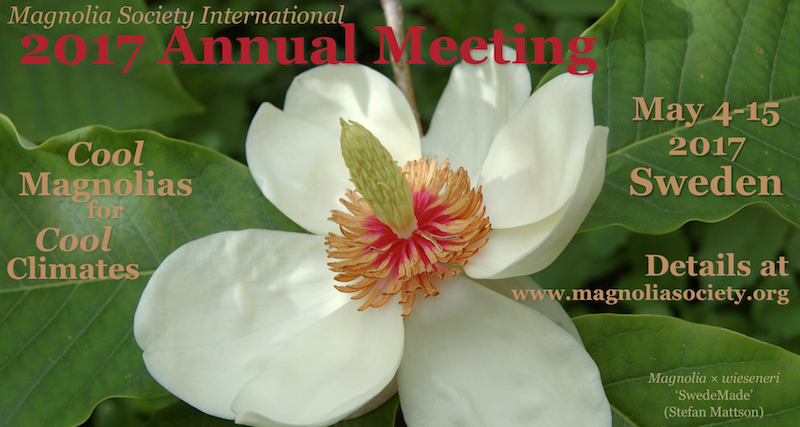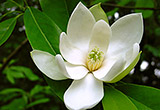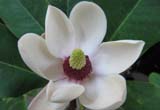INVITATION TO MSI ANNUAL MEETING 2017 By: Lennarth Jonsson, Lennart Söderberg and Sten Beckman In May of 2017, we invite the Magnolia Society International to Sweden for its annual meeting. As this means latitudes somewhere between Newfoundland and Greenland, you will not meet subtropical species, but you will find: Cool Magnolias for Cool Climates The meeting will be held at two sites, Malmö and Uppsala. You have the choice of attending both locations, or only one of them. In addition to that there are even optional programs! Our intention is to give you the opportunity to attend in accordance with your available time and budget. You will see that some travel and accommodation are still being arranged, but we are confident that such details will be sorted out by the time the annual meeting package is sent later. May 4 – 8, 2017: Malmö Participants arriving by airplane should book flights into Copenhagen/Kastrup Airport in Denmark (CPH). From there, you can catch a fast train into Malmö. We will be staying at the Comfort Hotel Malmö, which is only 128 paces from the Malmö Central Station. (https://www.nordicchoicehotels.se/comfort/comfort-hotel-malmo/) Participants arriving by car will be able to park near the hotel at about 160-190 SEK per 24 hours. Comfort Hotel Malmö does not have its own parking lot. The home base for our conference will be the Comfort Hotel Malmö. Meeting registration will begin in the afternoon of May 4, and there will be a welcome session that evening. We will have a very full program on each of the following three days. Every morning we will have lectures. In the afternoons after lunch, we will go on garden visits. There will be another lecture each evening after dinner. This may sound like a lot of lectures, but it is for a very good reason. We want to be sure that you receive a full overview of the magnolia culture in the Nordic countries. If we were to travel to even a portion of the locations where magnolias are grown, you would spend most of your time on the roads. Instead, we have invited the gardeners to come to Malmö to describe their conditions, gardens and magnolias. In addition to the individual Scandinavian gardeners, four keynote speakers will present papers describing their ventures into the world of magnolias. Todd West, who is breeding magnolias for the North Dakota climate, will describe how he meets this challenge. Erland Ejder has been very active in the Swedish Magnolia Group, breeding magnolias for the Magnolia Forest at Alnarp. He has also been to the Far East on several occasions, searching for magnolias growing in the wild. Some of Erland’s plant collecting research has been published in the Magnolia Journal. Henrik Sjöman, Curator of the woody collection of the Gothenburg Botanical Garden, will introduce us to its collection, of which a great part is wild collects. Henrik is also a lecturer at the Swedish Agricultural University (SLU) at Alnarp, and has made excursions to the Far East and other places. Kenneth Lorentzon has for a long time been connected to the Faculty of Landscape Architecture, Horticulture and Crop Production Science at SLU, Alnarp. He will introduce us to the magnolias in southern Sweden. This portion of our meeting will begin at 8pm on Thursday, May 4. We will gather in a room at the Comfort Hotel Malmö, where Lennarth Jonsson will give us an introduction to the itinerary planned for the next three days. After that, we will have the opportunity to freely mingle with other participants. It will be a chance to meet new colleagues and renew former acquaintances before launching into our exciting program. On Friday morning May 5, we will board a coach to travel to the Swedish Agricultural University (SLU) at Alnarp. Our lecture series will begin when we arrive. After lunch, we will tour plantings in SLU (www.slu.se/alnarpsparken). Our primary focus will be on the “Magnolia Forest”, a special area that has been devoted specifically to test magnolias in a southern Scandinavian climate. Although young, it already contains about 1,000 magnolias and the number is expected to rise towards 1,500. (For more information, see the Magnolia Journal Issue No. 96.) After dinner in the canteen at SLU, Alnarp, we will return by coach to the Comfort Hotel Malmö for our evening lecture. Following the morning lectures and lunch at the Comfort Hotel Malmö on May 6, we will depart for a very special private garden in Bjuv. This garden was begun by Karl E. Flinck, who started planting magnolias at this site in 1952. (See Magnolia Journal Issue No. 98.) Magnus Carlström, the present owner, is applying his own vision to enhance further development. Magnus has graciously offered to open this garden to the Magnolia Society International for the first time. This magnificent magnolia collection is likely to be the peak of mature magnolias that you will find in the Nordic countries! After lectures and lunch on May 7, we will travel north of Helsingborg to the park of Sofiero Castle, formerly one of the Swedish royal family’s country mansions. (www.sofiero.se). From the patio of the castle there is a breath-taking vista of the rhododendron collection and the Öresund Strait, the body of water which forms the Danish-Swedish border. Sofiero is a place where you will be immersed in the beauty of a garden. To end our last day in this fascinating area of Sweden, we will tour the town of Helsingborg. This will allow you to see the spectrum of magnolias commonly grown in southern Swedish homestead gardens. That night after dinner we will have our final keynote presentation. The following morning, May 8, we will check out of the hotel. May 8- 12, 2017: Uppsala, “The Northern Frontier” Uppsala is situated on the northern side of Lake Mälaren and approximately 700 km (435 miles) north of Malmö. When you move north in Sweden you will notice that the climate gradient is very steep. The climate is getting worse. Lake Mälaren is located in a zone between the latitudes 59° N and 61°N. If you follow these latitudes to the west you will pass through the south part of Greenland and then north of Labrador. If you go east you will eventually pass through Siberia. In spite of that, a large number of magnolias can be grown on the northern side of Lake Mälaren – including many magnolias that are not supposed to be hardy that far north! On May 8, our official program will begin with dinner at a hotel in Uppsala, which will be the home base for this portion of our conference. The hotel has not yet been selected. The daytime of May 8 is devoted primarily to travel. Those traveling by car will be able to park near the hotel at about 160-190 SEK per 24 hours. Those traveling by air will have flights arranged for them by the travel agency. We will be taken from the Comfort Hotel Malmö to the airport and catch a flight to Stockholm Arlanda airport. We will be transported by coach from Arlanda to the hotel in Uppsala. The Board of Directors will make a stop en route to the hotel to enable them to hold their meeting in the afternoon. Lennart Söderberg has cordially offered the board the use of the orangery in his garden, which is located halfway between the Stockholm Arlanda airport and Uppsala. Board members will have approximately four hours for their meeting, then continue to the hotel in Uppsala. Participants who are joining us for the first time in Uppsala will be able to register beginning in the late morning of May 8. Participants who attended the Malmö portion of the meeting are already registered for this portion. In the evening of May 8, dinner will be at the hotel. This will be followed by the Annual General Meeting, an introduction to the area by Lennart Söderberg and a lecture by Stefan Mattson. Lennart and Stefan are both long-term MSI members. Lennart developed the itinerary for the Uppsala portion of our meeting and Stefan is the former head gardener of Enköping, which we will tour the following day. On Tuesday May 9, we will board a coach and travel to Enköping, a city of approximately 21,000 residents which dates back to 1250. Here you can easily walk around in more than twenty centrally located parks. Several hundred varieties of perennials, bulbs and ornamental grasses are generously used over large areas. Together with interesting trees and shrubs, they make a fantastic display of colors, shapes and volumes. The former city head gardener for Enköping, Stefan Mattson, is passionate about magnolias. For this reason, Enköping’s parks can boast more magnolias than most other public parks in Sweden. In the morning, we will be given guided tours by Stefan. After lunch we will visit the awarded garden of Torsten Walderoe in Kungsängen. We will also visit the garden of Anna Lundborg, a garden with tough growing conditions. Dinner will again be at the hotel. After dinner there will be time for short presentations of private gardens. These will include information about growing magnolias in the far North (or a little south of the Arctic Circle). The subject of May 10 is Linnaeus and his students. After breakfast, we will walk from the hotel to the Linnaeus Garden. (http://www.linnaeus.uu.se/LTeng.html ) This was the first botanical garden in Sweden. Founded in 1655, it is laid out in the French Style and was restored following Linnaeus' and Carl Hårleman's design from 1745. Today approximately 1300 species are grown here. All are known to have been cultivated by Linnaeus and arranged according to his own system. This botanical garden contains the former home of Carl Linnaeus. In the orangery of the Linnaeus Garden, its Curator, Jesper Kårehed, will tell us about Linnaeus and one of his most important apostles, Pehr Kalm. We will then board a coach to take us to the Uppsala University’s Museum of Evolution. (http://www.uppsalasmuseer.se/english/eng_evolutionsmuseet.html) This unique natural history collection contains over 5 million specimens of fossils, minerals, animals and plants that have been accumulated since the 17th century. We will be welcomed by Mats Hjertson, Curator of the Museum of Evolution Botany, then divided into groups to see a historical gem: the Herbarium of Thunberg. We will learn more about this Swedish naturalist and pupil of Linnaeus during lunch. From the museum we will walk a short distance to the Baroque Garden of Uppsala University. (http://www.botan.uu.se/sevardheter/baroquegarden.html) Circa 1750, the architect Carl Hårleman was commissioned by King Adolf Frederick to draw a new plan for the gardens of Uppsala Castle. Hårleman's design was in the elegant, strict Baroque style that remains today. Lunch will be served in the Baroque Garden's 200-year-old Orangery, Linneanum, where Garden Director Mats Block will enlighten us with a presentation about Carl Peter Thunberg and the orangery plants. Carl Peter Thunberg, Linnaesus’ youngest student, was one of very few western people allowed to visit the Japanese mainland. He was even invited into the Japanese court. Thunberg was the first to give a name to Magnolia stellata, which he called M. tomentosa (the name was changed later), and he also noted Magnolia obovata. After lunch, we will travel by coach to Linnaeus' Hammarby. Linnaeus purchased this country estate in 1758 so that he and his family could spend the summers together away from the unhealthy quarters of Uppsala. Today, few Swedish manor houses preserve such an authentic setting. It reflects the private life of Linnaeus as well as his scientific work. While at Hammarby, we will sip coffee in the apple orchard and be given tours of the main building and park. Following dinner at the hotel in the evening, there will be poster presentations. The next morning, May 11, we will board coaches to take us to several private gardens. We will first travel to the city of Västerås to visit the garden of Sven-Olov Andersson. Sven began planting magnolias around 1975 and he now has 60 magnolias (50 different). Sven is so enthusiastic about his propagation, he is now planting magnolias in his neighbors’ gardens! From Västerås we will travel to Tidoe Lindoe on the Asko Fjord. Here we will tour the garden of the late Tore Widenfalk, one of the magnolia pioneers in the region. There are old and big trees in the garden. In the afternoon there will be a reception in Lennart Söderberg’s garden. It will include guided tours of this private test garden where Lennart is evaluating magnolias suitable for cold climate zones in Sweden. After our garden visitations, we will board the coach to return to the hotel. We will conclude our day with a farewell banquet. Attendees ending their program participation will check out of the hotel and depart on May 12. For those who traveled to Stockholm by air, the travel agent will arrange flights back to Copenhagen/Kastrup Airport (CPH). Those continuing to stay with us have two choices. May 12, 2017: These options are available only to those who attend May 8 – 12 in Uppsala. 1) Tour Arboretum Lassas Hagar. This tour is limited to 24 people. Participation will be on a first-come first-served basis. Arboretum Lassas Hagar is on the remote island of Svartlöga in the Stockholm Archipelago. This five hectare (12 acre) arboretum was founded by Sten Ridderlöf in 1980. Sten has made 15 plant hunting expeditions around the world, focusing on locations with climates similar to that of the arboretum. He has found the best results in adaptation in trees that he collected in NE Asia, mostly the Russian Far East, North and South Korea. Magnolias, oaks, maples and rhododendron have long been Sten’s favourites but there are many others in his collection of approximately 2,500 specimens. Sten will show us the plants, talk about how they were collected, and tell us stories about the old fishermen’s island where the arboretum is located. For more information, please visit www.lassashagar.se or read the article titled “20 YEARS OF PLANT INTRODUCTIONS (1997-2016)” at http://www.lassashagar.se/vaxtforteckning/20-years-of-plant-introductions-1997-2016/ This will be a full-day excursion far out in the Swedish archipelago, a perfect end to the portion of our meeting in the “Northern Frontier”. We will travel by sea taxi. The number of participants is limited to 24 due to our mode of transportation and the group size that can comfortably tour the arboretum. A day tour in Stockholm will be offered to those who will not be able to visit Arboretum Lassas Hagar. 2) Tour Stockholm This will be a one-day tour arranged by the travel agent. Destinations have not been determined, but they would be different than those offered in the optional May 13 – 15 Stockholm tour. May 13 - 15, 2017: Gothenburg On May 13 we will check out of the hotel. For participants continuing to Gothenburg, it will mostly be a day of travel. Those with cars will determine their own schedules. The travel agent will make arrangements for those without cars. She will also book hotel accommodations and arrange meals for all of us in Gothenburg. We don’t yet have plans for Saturday evening May 13, but we will awaken the next morning to the bright prospect of visiting a truly premier garden. May 14 will be devoted to the Gothenburg Botanical Garden. (gotbot.se) Considered to be one of the leading gardens in Northern Europe, the 175 hectares (430 acres) include an extended collection of wild collects. Work on the Botanical Garden was begun a century ago, and the park was opened to the public in 1919 (the Woodlands) and in 1923 (the cultivated areas). One of the prominent botanists who created the garden was Carl Skottsberg, who made several research trips around the globe to collect the rare plants of the garden. Members of the garden staff will meet us on the morning of May 14 and give us a guided tour. Lunch will be in the garden restaurant. After that, you will be free to spend time on your own in the garden. In the late afternoon, we will walk to Trädgårdsföreningen, one of the best preserved 19th century parks in Europe. (www.tradgardsforeningen.se) We will be given a guided tour of this 170-year-old park, then relax at dinner in the restaurant Trädgår’n (www.tradgarn.se) which is located within the grounds of Trädgårdsföreningen. What a wonderful way to end our excursion! Dining together in this unique green oasis in the centre of the city of Gothenburg! On Monday May 15, our amazing adventure in Sweden officially ends and we will check out of the hotel. For those without cars, the travel agent will arrange transportation back to Copenhagen/Kastrup Airport (CPH) . For those who may want to remain and explore Gothenburg on their own, the city has many attractions to offer. One mature park open to the public is Gunnebo, a neoclassical country house with landscaped grounds built in the 1790s. (www.gunneboslott.se/) Regarding “non-horticulture”, there are also a lot of interesting things. There is a big opera house, famous for its excellent acoustics. There is a canal boat that takes you through the city, which was dug (literally!) by Dutch workers in the early 1600s. The archipelago is very nice, and there are a lot of museums, restaurants, shopping, etc. Last, but not least, there is a newly built replica of an “East Indiaman” ship. The original was used for the trade with China from 1731 to 1813. May 13 - 15, 2017: Stockholm Optional Tour Those who prefer not to travel to Gothenburg may be interested in staying awhile in Stockholm. The capital of Sweden, Stockholm is a city built on islands. It is sometimes called the Venice of the North. There are numerous tourist attractions. If there are enough participants interested in this option, the travel agency will arrange a tour. The locations visited would differ from those visited on May 12. Possible destinations might include:
Links: For answers to Frequently Asked Questions (FAQ), please click here. To download a PDF version of the FAQ, please click here. |




